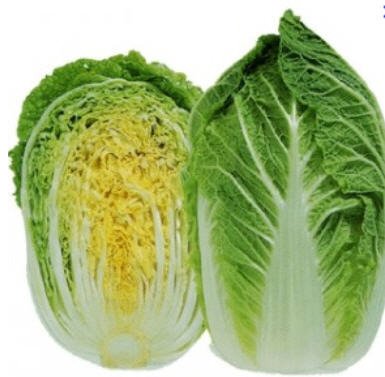Col de pekín and its benefits
source

Also known as "cole slaw", a plant, as the name implies, comes from China. There, this variety of cabbage was cultivated and selected in the fifth century AD. C., after which it gained rapid popularity in Japan, Korea and Southeast Asia. In Europe and the United States, the cabbage from Beijing has become very well known recently. The second name is "Beijing", under which you can find: "Petsai". The main difference of this variety of cabbage is the shape and structure of the leaves. The cabbages of the variety "Peking" are oblong, with well-adjusted leaves, white and fleshy at the beginning, and green and tender at the top, the taste is not inferior to lettuce at all. The cabbage of Beijing does not have a stalk as pronounced as the white cabbage, which makes it possible to use it almost completely.
When choosing Chinese cabbage, preference is given to mature cabbage heads, not too small, without rot, damage and dry leaves.
Under conditions of low refrigerator temperature, the peppers can be stored without loss of flavor and consumption qualities of the order of a week and a half. If at the same time they are packed hermetically, the useful life can increase to fifteen days. Especially the long-term storage of this crop is able to provide a winery with the desired temperature and humidity characteristics (2-3 ° C and 95-98% humidity, respectively). In it, the vegetable can "live" up to four months. By the way, another reliable storage method is the freezing of previously separated sheets. The undoubted advantage of Chinese cabbage is the ability to preserve vitamins in the long term.
This variety is distinguished by its low caloric content, only 13 kcal per 100 grams of product, which explains the greater attention given by people who care about maintaining their figure. No other type of cabbage can boast such low calorie content! And during the heat treatment, Beijing loses a calorie.
The usefulness of the variety of Beijing cabbage is due to the wide range of vitamins and trace elements contained in its leaves. Here are the vitamins of group B, vitamin A, vitamins C, E, K. Contains iodine, manganese, copper, zinc, phosphorus, iron, magnesium and potassium.
Due to its low calorie content, the Beijing cabbage firmly occupies the main lines in the dietary menu. Its presence in the diet will help to successfully treat headaches, depressions, nervous disorders and diabetes mellitus, and will also serve to prevent the onset of cardiovascular diseases, in particular atherosclerosis and hypertension. The fiber contained in cabbage leaves has a beneficial effect on intestinal function, and peeling is recommended for ulcers and gastritis.
Phytocides, which are contained in cabbage juice, help in inflammatory diseases and in the treatment of purulent wounds. In the home of this variety, as well as in Japan, Petsay is considered one of the sources of longevity. This is explained by the content in the cabbage leaves of a large amount of a particular amino acid: lysine (purifies the blood by dissolving foreign proteins, directly influences the formation of the immune system). In addition, lactucine is found in the leaves, which has a beneficial effect on metabolism, normalizes blood pressure and strengthens the walls of blood vessels. In addition, pets stimulate the formation of red and white blood cells, which is very important for anemia, regulates cholesterol, reduces the likelihood of tumors and protects the liver from fatty rebirth. Another valuable characteristic of Beijing cabbage is the ability to excrete heavy metals and radionuclides from the body.
Petsay - a component of a variety of dishes. Of course, most of the time this cabbage is found in several salads, of which Korean kimchi is popular. "Beijing" is used in soups, borscht, vegetable stews, side dishes, serves as a substitute for white cabbage in the preparation of cabbage rolls. In addition, this variety has been tested in pickle, salted, fermented, dried. Petsay is used to stew meat and mushrooms.
To exclude "peking" from the diet should be with greater acidity, bleeding from the gastric tract, exacerbations of various diseases of the stomach or intestines (for example, pancreatitis). Frequent excessive consumption of fresh peps can cause diarrhea, nausea and headache. Cabbage is not very compatible with dairy products, while consumption at the same time can cause severe indigestion.